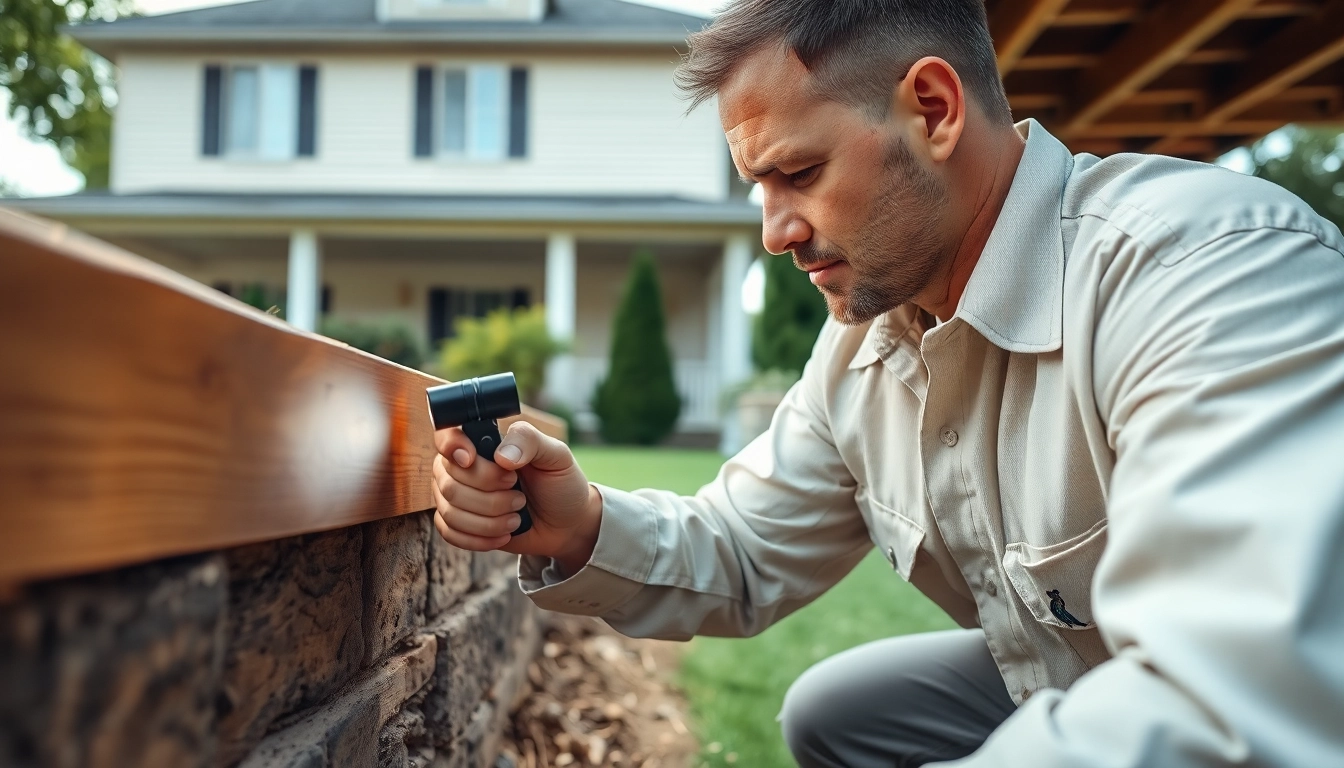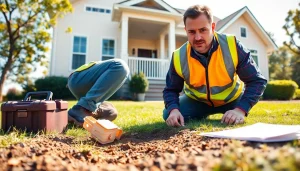Essential Insights on Termite Inspections: What Every Homeowner Should Know
Understanding Termite Inspections
What is a termite inspection?
A termite inspection is a thorough examination of a property to identify any signs of termite infestation or potential conditions conducive to such infestations. During these inspections, certified professionals look for various indicators, including damage to wood structures, the presence of termite droppings, and the identification of termite activity. A comprehensive inspection usually covers both the interior and exterior areas of a home or building, often taking around 45 minutes to an hour to complete, depending on the size of the property.
Why are termite inspections important?
Termite inspections are crucial for maintaining the structural integrity of a home. Termites cause significant damage that can compromise safety and lead to costly repairs. By identifying infestations early through termite inspections, homeowners can address problems before they escalate. Additionally, termite inspections are often required by lenders as part of the home-buying process to ensure that the property is free from pest damage and potential liability.
Common signs of termite infestations
Homeowners should be vigilant in looking for the following signs of a termite infestation:
- Wood damage: Hollowed-out wood is often a primary indicator. Termites eat the wood from the inside out, leaving the outer shell intact.
- Subterranean tubes: These mud tubes may be found on walls and foundations; they provide protection for termites while traveling to and from their food source.
- Termite droppings: Also known as frass, these small granules resemble wood shavings and can be seen near infestation sites.
- Swarmers: Winged reproductive termites can indicate an active infestation, particularly during peak spring months.
- Discarded wings: After swarming, termites shed their wings, which can be found near windows or light sources.
What to Expect During a Termite Inspection
The inspection process explained
The inspection process begins with a visual examination of readily accessible areas, typically by a trained pest control technician. The inspector will assess the exterior of the property, starting from the foundation, checking for any visible signs of termite activity. Next, they will move indoors, inspecting areas such as attics, basements, and crawl spaces, focusing on wood structures, insulation, and any damp areas that might attract termites.
Areas of focus during termite inspections
Inspectors typically focus on high-risk areas that are prone to termite infestations, including:
- Foundation: Checking for cracks, moisture, and mud tubes.
- Wood structures: Examining beams, joists, and other wooden materials for signs of damage.
- Basements and crawl spaces: Observing these areas for moisture, which attracts termites.
- Roof and attic: Inspecting rafters and vents for signs of termites.
What tools do inspectors use?
Termite inspectors utilize a variety of tools to conduct a comprehensive examination. Commonly used tools include:
- Moisture meters: To detect hidden moisture levels that might attract termites.
- Flashlights: For thorough inspection during dark spaces such as attics and crawl spaces.
- Screwdrivers: To prod wood structures to identify hollow sections.
- Borescopes: Allowing for inspection in hard-to-reach areas by providing a visual feed of tucked-away parts of a structure.
Cost and Frequency of Termite Inspections
Typical costs associated with termite inspections
The cost of termite inspections can vary significantly depending on factors such as the size of the property and the extent of the inspection required. On average, termite inspections cost between $75 to $325, with most falling around $100. Some pest control companies may offer free inspections as part of their promotional strategy, especially if they are also providing treatment services.
How often should you schedule termite inspections?
Experts generally recommend scheduling termite inspections at least once a year. However, in areas with high termite activity or after significant weather events, more frequent inspections may be warranted. If you live in a region prone to termites or have had a previous infestation, a semiannual review may be the best practice to stay one step ahead.
Factors that influence inspection costs
Several factors can impact the cost of termite inspections, including:
- Property size: Larger properties require more time and resources to inspect.
- Location: Prices may be higher in urban areas compared to rural locations.
- Type of inspection: Detailed inspections that include reports or additional testing may cost more than basic visual inspections.
- Company reputation: Established pest control companies may charge higher fees based on their experience and customer service quality.
Preparing for a Termite Inspection
Steps to take before the inspector arrives
Homeowners should prepare adequately for an upcoming termite inspection. Here are some steps to follow:
- Clear access: Move furniture and other items out of the way to allow inspectors to access critical areas like attics, basements, and crawl spaces.
- Report previous issues: Inform the inspector about any prior pest problems or termite treatments conducted on the property.
- Inspect your own property: Look for visible signs of termites and note these observations for discussion with the inspector.
Common homeowner mistakes to avoid
Homeowners often make mistakes in the preparation process, such as:
- Neglecting to inform the inspector of past infestations: This information is crucial for proper assessment.
- Not providing access: Keeping essential areas off-limits delays the inspection process and may compromise results.
- Ignoring minor signs of infestation: Small issues can escalate quickly; addressing them can help avoid larger problems down the line.
Documents to have ready for the inspector
Having relevant documentation prepared can help facilitate the inspection process. Essential documents include:
- Previous inspection reports: These can provide valuable context for current inspections.
- Proof of prior treatments: Evidence of past pest control efforts helps inform current strategies.
- Home improvement and renovation records: Any recent changes to the property’s structure can impact pest control considerations.
After the Termite Inspection
Interpreting the inspection report
After the inspection, homeowners will receive a report detailing findings. This report typically includes:
- The presence or absence of termites.
- Locations of any infestations and damage.
- Recommendations for treatment if termites are found.
- Considerations for preventative measures to avoid future infestations.
Understanding this report is crucial for making informed decisions regarding pest control and home maintenance.
Next steps if termites are found
If an inspection reveals a termite infestation, immediate action is essential. Homeowners should consider:
- Professional treatment: Engage a qualified pest control service to address the infestation.
- Structural repairs: Repair any damaged areas to restore the integrity of the property.
- Follow-up inspections: Schedule regular inspections post-treatment to ensure the effectiveness of measures taken.
Preventative measures post-inspection
To prevent future termite issues, homeowners can adopt various strategies, such as:
- Moisture control: Fix leaky pipes and improve drainage around the home to reduce moisture levels.
- Landscaping adjustments: Keep mulch and soil at a safe distance from the foundation to minimize termite attraction.
- Regular inspections: Continue annual inspections to monitor any potential re-emergence of termites.



